Welcome to the importance of home preparedness. This is a step-by-step guide on how to prepare your home for natural disasters.
How to Prepare Your Home for Natural Disasters: A Step-by-Step Guide
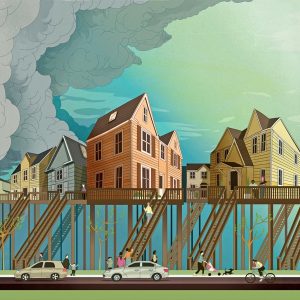 In a world where natural disasters seem to be occurring with increasing frequency, it has become more crucial than ever to ensure the safety of our homes and our loved ones. The impact of these unforeseen events on homes and communities can be devastating, leaving families displaced and properties destroyed. But fear not, for this article is here to guide you through a comprehensive, step-by-step process of safeguarding your home from the wrath of Mother Nature.
In a world where natural disasters seem to be occurring with increasing frequency, it has become more crucial than ever to ensure the safety of our homes and our loved ones. The impact of these unforeseen events on homes and communities can be devastating, leaving families displaced and properties destroyed. But fear not, for this article is here to guide you through a comprehensive, step-by-step process of safeguarding your home from the wrath of Mother Nature.
The Rising Frequency of Natural Disasters
As climate change continues to reshape our environment, natural disasters such as hurricanes, earthquakes, floods, and wildfires have become all too common occurrences. These calamities can strike without warning, leaving little time for preparation. They not only pose a significant threat to our physical well-being but can also wreak havoc on our homes, causing extensive damage that may take years to recover from.
Comprehensive Step-by-Step Guide
The purpose of this article is to equip homeowners with the knowledge and tools they need to fortify their homes and protect their families in the face of natural disasters. From identifying vulnerabilities to creating a home emergency plan, we’ll walk you through each essential step with easy-to-follow instructions and helpful tips.
Embracing Peace of Mind
When it comes to our homes, nothing is more valuable than peace of mind. Knowing that you have taken proactive measures to safeguard your property and loved ones can provide a sense of security even in the most challenging times. By investing time and effort into home preparedness, you’ll not only minimize potential damage but also gain the confidence to face any disaster head-on.
So, join us on this journey of preparedness as we dive into the world of home protection and resilience. Together, we’ll ensure that your home stands strong against the forces of nature, providing a safe haven for you and your family when it matters most.
Understanding Natural Disasters
Overview of Common Natural Disasters and Their Potential Effects on Homes
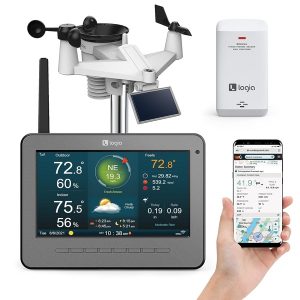 Natural disasters come in various forms, each capable of unleashing its own unique fury upon homes and communities. Earthquakes, with their ground-shaking force, can cause structural damage and collapse buildings, leaving homes in ruins. Hurricanes, with their powerful winds and storm surges, can rip off roofs, shatter windows, and flood properties, leaving behind a trail of destruction. Floods, whether from heavy rainfall or overflowing rivers, can seep into homes, causing water damage and mold growth. Wildfires, fueled by dry conditions and strong winds, can engulf entire neighborhoods, turning homes to ashes.
Natural disasters come in various forms, each capable of unleashing its own unique fury upon homes and communities. Earthquakes, with their ground-shaking force, can cause structural damage and collapse buildings, leaving homes in ruins. Hurricanes, with their powerful winds and storm surges, can rip off roofs, shatter windows, and flood properties, leaving behind a trail of destruction. Floods, whether from heavy rainfall or overflowing rivers, can seep into homes, causing water damage and mold growth. Wildfires, fueled by dry conditions and strong winds, can engulf entire neighborhoods, turning homes to ashes.
Understanding the potential effects of these disasters is crucial in preparing for them. By recognizing the specific dangers each poses to homes, homeowners can take targeted measures to mitigate the risks and enhance their home’s resilience.
Explanation of Risk Assessment and Identifying Vulnerabilities Specific to Your Geographical Location
Conducting a risk assessment tailored to your geographical location is a vital step in home preparedness. Different regions face varying natural disaster risks, making it essential to identify vulnerabilities specific to your area. For instance, if you live in a coastal region, the risk of hurricanes and storm surges may be higher. In earthquake-prone areas, structural reinforcements become paramount.
During a risk assessment, homeowners should evaluate their property’s susceptibility to natural disasters, considering factors such as proximity to fault lines, flood zones, or wildfire-prone areas. Engaging with local authorities and disaster management agencies can provide valuable insights into regional risks and recommended protective measures.
By understanding the unique challenges presented by your geographical location, you can develop a tailored approach to safeguarding your home. Implementing the right preparations will not only enhance your home’s chances of withstanding disasters but also increase the safety of those within.
Importance of Staying Informed About Local Emergency Plans and Weather Updates
Knowledge is power, especially when it comes to confronting natural disasters. Familiarizing yourself with local emergency plans and staying up-to-date with weather forecasts can make a significant difference during a crisis.
Local emergency plans outline evacuation routes, shelter locations, and community resources available during disasters. Being aware of these plans allows you to act swiftly and decisively when disaster strikes. Regularly review and discuss these plans with family members to ensure everyone is well-informed and prepared.
Furthermore, staying informed about weather updates is crucial in anticipating potential natural disasters. With advanced warning, you can take preventive measures to protect your home and evacuate if necessary. Invest in weather alert systems and apps that provide real-time information to keep you informed at all times.
By arming yourself with knowledge and staying informed, you can proactively respond to natural disasters, reducing the impact on your home and loved ones.
Check out these weather alert systems by clicking here.
Creating a Home Emergency Plan
Developing a Comprehensive Emergency Plan for Your Household
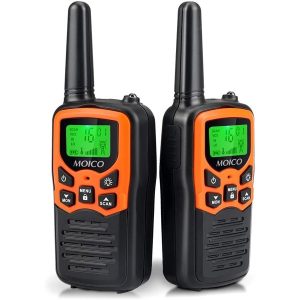 A well-crafted emergency plan is the backbone of preparedness for any household. Start by gathering your family members and discussing potential disaster scenarios that could affect your area. Brainstorm together and devise a plan that covers all aspects of your safety and well-being. This includes outlining actions to take during different disasters, identifying safe areas within your home, and establishing clear communication channels.
A well-crafted emergency plan is the backbone of preparedness for any household. Start by gathering your family members and discussing potential disaster scenarios that could affect your area. Brainstorm together and devise a plan that covers all aspects of your safety and well-being. This includes outlining actions to take during different disasters, identifying safe areas within your home, and establishing clear communication channels.
Assigning Roles and Responsibilities to Family Members
In times of crisis, having defined roles and responsibilities for each family member can make a significant difference. Assign specific tasks to each member based on their abilities and strengths. For instance, someone could be in charge of gathering essential documents, while another takes charge of pets and their supplies. By distributing responsibilities, everyone knows their role, making the emergency response smoother and more organized.
Designating Meeting Places and Communication Methods
In the chaos of a natural disaster, communication can become challenging. It is essential to establish predetermined meeting places where family members can reunite if separated. Choose both a nearby location, like a neighbor’s house or a local landmark, and a designated out-of-area contact who can act as a central point for communication. Share this contact information with everyone in the family.
Moreover, set up alternative communication methods in case conventional means like phones are disrupted. Invest in two-way radios or have a contingency plan for relaying messages through social media platforms or text messaging.
Check out these two-way radios which are the perfect way of communicating by clicking here.
Preparing an Emergency Kit with Essential Supplies
An emergency kit is a lifeline during times of disaster, ensuring you have crucial supplies to sustain yourselves until help arrives. Assemble a comprehensive kit that includes necessities such as non-perishable food, water, first-aid supplies, flashlights, batteries, a multi-tool, and hygiene items. Tailor the kit to your family’s specific needs, including medications, baby supplies, and pet essentials.
Store the emergency kit in a readily accessible location, known to all family members. Check and refresh the supplies regularly to ensure they remain in good condition.
By creating a home emergency plan, you instill a sense of security and confidence in your family. Everyone knows what to do and where to go in case of disaster, minimizing panic and ensuring a swift and coordinated response.
Check out this range of emergency kits by clicking here.
Fortifying Your Home
Conducting a Thorough Home Inspection for Potential Vulnerabilities
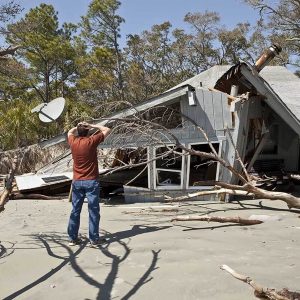 Before you prepare your home for natural disasters, conduct a comprehensive inspection to identify potential vulnerabilities. Look for signs of wear and tear, water damage, and structural weaknesses. Check the roof for loose shingles, the foundation for cracks, and the walls for any signs of settling. Addressing these issues proactively can prevent them from escalating during a natural disaster.
Before you prepare your home for natural disasters, conduct a comprehensive inspection to identify potential vulnerabilities. Look for signs of wear and tear, water damage, and structural weaknesses. Check the roof for loose shingles, the foundation for cracks, and the walls for any signs of settling. Addressing these issues proactively can prevent them from escalating during a natural disaster.
During the inspection, pay special attention to areas that might be prone to flooding or high winds. Evaluate the sturdiness of outdoor structures, such as fences and sheds. Taking note of these vulnerabilities will guide your efforts in making necessary improvements.
Securing Doors, Windows, and Vulnerable Points Against High Winds and Flooding
Strong winds and flooding are common aspects of many natural disasters. Ensuring that your doors and windows can withstand such forces is essential to protect your home’s integrity. Consider installing storm shutters or impact-resistant windows to shield against flying debris and strong gusts.
For doors, invest in heavy-duty, reinforced models with robust locks. Reinforce garage doors to prevent them from buckling under pressure. Installing weather-stripping around doors and windows can also enhance their ability to keep out water and wind.
Additionally, identify other vulnerable points, such as vents and crawl space openings, and secure them with appropriate covers or screens. Don’t forget to inspect and maintain your roof to prevent water seepage during heavy rainfall.
Strengthening the Foundation to Withstand Earthquakes
If you live in an earthquake-prone region, it’s essential to reinforce your home’s foundation. Consult with a structural engineer to evaluate the integrity of your foundation and identify any necessary reinforcements.
One effective measure is bolting your home to its foundation to prevent separation during an earthquake. Installing shear walls and using metal connectors can add strength and stability to your home’s structure. Properly securing heavy furniture and appliances to the walls can also reduce the risk of injuries during seismic events.
Fireproofing Your Home and Creating a Defensible Space
Wildfires pose a significant threat to homes located near forested areas or dry landscapes. To protect your property from wildfire, create a defensible space by clearing flammable vegetation and debris from around your home. Maintain a buffer zone of at least 30 feet, free from highly combustible materials.
Use fire-resistant building materials for roofing, siding, and decking. Incorporate non-combustible barriers, such as gravel or rock, to separate your home from nearby vegetation. Keep gutters and roofs free of debris to minimize fire ignitions.
Consider investing in fire-resistant coatings for the exterior walls and doors, which can provide an added layer of protection against flames and radiant heat.
Recommended Products:
- Impact-Resistant Windows and Storm Shutters: Consider top-quality impact-resistant windows and storm shutters that provide exceptional protection against high winds and debris during hurricanes and storms. Buy Here
- Reinforced Garage Door: Reinforced garage doors with robust locking systems, ensuring your garage stays secure during severe weather conditions.
- Earthquake Retrofitting Services: Contact a professional earthquake retrofitting services to strengthen your home’s foundation and safeguard against seismic events.
- Fire-Resistant Coatings: Premium fire-resistant coatings for walls and doors, providing a vital shield against wildfires.
When you prepare your home for natural disasters, you significantly increase its resilience and the safety of your family. Implementing these measures will offer you peace of mind, knowing your home is well-protected during challenging times.
Safeguarding Utilities and Infrastructure
Shutting Off Utilities During Emergencies to Prevent Damage
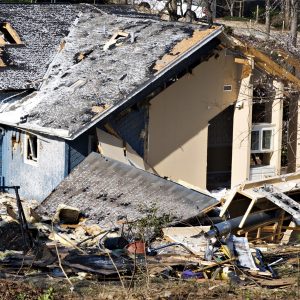 In the midst of a natural disaster, shutting off utilities is a critical step to prevent further damage to your home. Familiarize yourself with the location of utility shut-off points, including gas, water, and electricity. Knowing how to turn off these services quickly can protect your home from potential hazards and minimize the risk of fire, flooding, or electrical damage.
In the midst of a natural disaster, shutting off utilities is a critical step to prevent further damage to your home. Familiarize yourself with the location of utility shut-off points, including gas, water, and electricity. Knowing how to turn off these services quickly can protect your home from potential hazards and minimize the risk of fire, flooding, or electrical damage.
Keep a wrench or tool handy near gas and water shut-off valves to ensure easy accessibility. Teach all family members how to perform these shut-offs safely. Once the immediate threat has passed, follow the guidance of local authorities and utility providers on when it is safe to restore services. If all your family members have this knowledge it will go along way when you prepare your home for natural disasters
Check out this range of wrenches by clicking here.
Reinforcing Gas, Water, and Electrical Lines for Added Safety
Reinforcing gas, water, and electrical lines is essential to mitigate the risk of leaks, ruptures, and electrical hazards during a disaster. Consider installing flexible gas connectors that can withstand movement during earthquakes, reducing the chance of gas leaks. Have a professional inspect and secure water pipes to prevent potential ruptures, especially in areas prone to freezing temperatures. A professional will help prepare your home for natural disasters and any potential issues with your main utilities.
For electrical lines, ensure that they are well-protected and elevated off the ground to avoid water damage. Consider upgrading to surge protectors or installing whole-house surge protection systems to safeguard your electrical appliances and devices from power surges.
Check out this range of electrical surge protectors by clicking here.
Protecting Electrical Appliances and Equipment from Power Surges
Power surges are a common occurrence during natural disasters, particularly during storms and hurricanes. These surges can cause irreparable damage to your electrical appliances and equipment. Protect your valuable electronics by using surge protectors or unplugging devices during severe weather events.
Invest in surge protectors with sufficient joule ratings to absorb high-energy spikes. Consider using point-of-use surge protectors for individual devices and whole-house surge protectors for comprehensive protection of your electrical system.
Check out this range of electrical surge protectors by clicking here.
Recommended Products:
- Gas Shut-off Tool: [Brand XYZ] offers a reliable and easy-to-use gas shut-off tool that allows you to quickly turn off the gas supply during emergencies, ensuring the safety of your home.
- Flexible Gas Connectors: [Brand ABC] manufactures durable and flexible gas connectors designed to withstand seismic activity, reducing the risk of gas leaks.
- Whole-House Surge Protector: [Brand DEF] provides high-quality whole-house surge protectors that shield your electrical system from power surges, keeping your appliances safe during natural disasters.
Installing Sump Pumps and Backflow Preventers to Manage Water Intrusion
Water intrusion is a common issue during floods and heavy rainfall. Installing sump pumps can help manage excess water by directing it away from your home’s foundation. Sump pumps are particularly beneficial in basements and crawl spaces, where water tends to accumulate.
Backflow preventers are essential for protecting your home’s water supply from contamination during floods. These devices prevent reverse flow, ensuring that contaminated water does not flow back into your clean water lines.
Consider consulting a professional to assess your home’s water management needs and determine the most suitable sump pump and backflow preventer for your property.
By safeguarding your utilities and infrastructure, you minimize the risk of further damage and enhance the safety of your home during natural disasters. These measures provide you with a higher level of preparedness and protection, ensuring that your home remains resilient in challenging times.
Creating a Safe Room
Designating and Fortifying a Safe Room for Family Protection
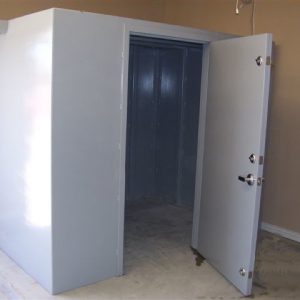 A safe room is a designated space within your home where your family can seek refuge during a natural disaster. While many people think of a safe room as a way to protect their family in the event of an intruder they are also vital when you come to prepare your home for natural disasters. Choose a room with sturdy walls and limited exterior openings, such as a basement, interior bathroom, or walk-in closet. Reinforce the walls and door with strong materials, such as steel or solid wood, to withstand high winds and debris.
A safe room is a designated space within your home where your family can seek refuge during a natural disaster. While many people think of a safe room as a way to protect their family in the event of an intruder they are also vital when you come to prepare your home for natural disasters. Choose a room with sturdy walls and limited exterior openings, such as a basement, interior bathroom, or walk-in closet. Reinforce the walls and door with strong materials, such as steel or solid wood, to withstand high winds and debris.
Ensure the safe room has ample space to accommodate all family members comfortably. Install a reliable lock on the door to secure the space during an emergency. Communicate with your family members about the designated safe room and practice seeking shelter to ensure everyone is familiar with the process.
Check out these safe room essential supplies by clicking here.
Outfitting the Safe Room with Emergency Supplies and Communication Devices
Equipping your safe room with essential emergency supplies is crucial for sustaining your family during extended periods of sheltering. Store non-perishable food, bottled water, a first-aid kit, flashlights, and blankets within the safe room. Consider including a battery-powered or hand-cranked radio to stay informed about the situation outside.
Communication devices are vital for staying connected during emergencies. Keep a fully charged cell phone or battery-powered radio in the safe room to receive updates and contact emergency services if needed. Having a whistle or air horn on hand can also serve as an effective signaling tool in case of rescue efforts.
Check out these safe room essential supplies by clicking here.
Insurance and Legal Preparedness
Reviewing and Updating Insurance Policies to Ensure Comprehensive Coverage
Reviewing your insurance policies regularly is crucial to ensure your home is adequately covered against potential damages caused by natural disasters. Check with your insurance provider to understand the extent of your coverage and identify any gaps that need to be addressed. Consider purchasing additional coverage for specific disasters not included in your standard policy.
Keep an updated inventory of your home’s contents, including valuable items, and their estimated value. This documentation will facilitate the claims process in case of loss or damage.
Understanding Insurance Claim Procedures and Documentation Requirements
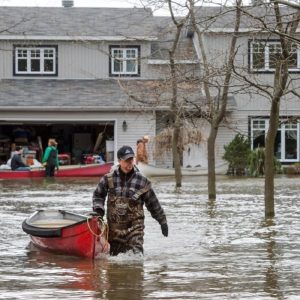 Familiarize yourself with the procedures for filing insurance claims, including the necessary documentation and reporting deadlines. Promptly document any damage caused by a natural disaster, taking photographs and videos to support your claim.
Familiarize yourself with the procedures for filing insurance claims, including the necessary documentation and reporting deadlines. Promptly document any damage caused by a natural disaster, taking photographs and videos to support your claim.
Maintain open communication with your insurance company throughout the claims process, seeking clarification when needed. Engage the services of a public adjuster, if necessary, to ensure your claim is appropriately evaluated.
Legal Considerations for Protecting Your Home and Property
Understanding the legal aspects of home ownership is essential for protecting your property during natural disasters. Consult with a legal professional to ensure you are complying with local building codes and zoning regulations. These regulations often provide guidance on fortifying your home against specific hazards.
Additionally, consider establishing a trust or other legal arrangements to protect your property from potential liabilities arising from natural disasters. Ensure your property deeds and ownership documents are up-to-date and safely stored in a secure location.
Emergency Evacuation and Sheltering
Developing an Evacuation Plan for Various Scenarios
An evacuation plan is a crucial component of home preparedness. Identify different scenarios that may require evacuation, such as wildfires, hurricanes, or flooding. Create specific routes and plans for each situation, considering alternative routes in case of road closures.
Practice the evacuation plan with your family to ensure everyone knows the escape routes and designated meeting places. Assign responsibilities to family members, including packing emergency kits, securing valuable items, and caring for pets during the evacuation.
Identifying Safe Evacuation Routes and Emergency Shelters
Research and identify safe evacuation routes in advance. Familiarize yourself with multiple routes to ensure flexibility during emergencies. Stay informed about road conditions and potential hazards to avoid dangerous routes.
Know the locations of nearby emergency shelters in case you cannot safely evacuate far from your home. Keep a list of shelters and their contact information handy, and be prepared to follow the instructions of local authorities during evacuations.
Preparing Your Home for Evacuation and Securing Valuables
Before leaving your home during an evacuation, take essential steps to secure your property and valuables. Shut off utilities, lock doors and windows, and unplug electrical appliances to minimize potential hazards. Safely store important documents, such as insurance policies and identification papers, in a waterproof container to bring with you. This is often overlooked when people prepare your home for natural disasters.
Secure valuable items like jewelry, heirlooms, and irreplaceable documents in a fireproof and waterproof safe or take them with you when you evacuate. Remove any flammable materials from around your home, ensuring you create a defensible space to protect it in your absence.
Post-Disaster Recovery and Rebuilding
Navigating the Aftermath of a Natural Disaster
The aftermath of a natural disaster can be overwhelming, both emotionally and practically. Take the time to assess the damage to your home and property. Prioritize safety and avoid re-entering your home until authorities deem it safe to do so. Keep an eye out for potential hazards, such as downed power lines and unstable structures.
Contact your insurance company to initiate the claims process promptly. Document all damages with photographs and notes to support your claim. Be patient during the recovery process, as it may take time to assess the extent of the damage and start rebuilding efforts.
Prioritizing Safety During Recovery Efforts
Safety should be your top priority during post-disaster recovery. Be cautious of structural damage and potential hazards in your home. Use appropriate personal protective equipment (PPE) when handling debris or cleaning up. If you’re unsure about the safety of a task, seek professional assistance.
Avoid using damaged electrical appliances and outlets until they have been inspected and cleared by a qualified electrician. Follow all safety guidelines provided by local authorities and disaster relief organizations to protect yourself and your family during the recovery process.
Finding Reputable Contractors and Professionals for Rebuilding
When rebuilding your home, it’s essential to work with reputable contractors and professionals. Seek recommendations from friends, neighbors, or your insurance company. Verify their licenses, insurance, and credentials before hiring.
Obtain multiple quotes and carefully review contracts before committing to any rebuilding work. Make sure the contract includes a detailed scope of work, timeline, and payment schedule. Stay involved in the rebuilding process, communicating regularly with contractors to ensure everything is proceeding according to plan.
Applying for Financial Assistance and Government Aid
Financial assistance and government aid can be instrumental in helping you recover from a natural disaster. Research available assistance programs from federal, state, and local government agencies. Contact FEMA (Federal Emergency Management Agency) to determine if you qualify for disaster assistance.
Document all expenses related to the disaster and your recovery efforts. Keep records of repairs and receipts for all purchases, as these documents may be necessary when applying for aid or insurance claims.
Mental and Emotional Preparedness
Addressing the Psychological Impact of Natural Disasters
Natural disasters can have a profound impact on mental and emotional well-being. It’s normal to experience a range of emotions, including fear, anxiety, and sadness. Allow yourself and your family members to process these emotions in a supportive environment.
Seek support from friends, family, or mental health professionals to talk about your feelings and experiences. It’s crucial to remember that emotional recovery is just as important as physical recovery during this time.
Coping Strategies for You and Your Family During and After a Disaster
Coping with the aftermath of a disaster requires resilience and adaptability. Practice self-care by maintaining a healthy routine, getting enough rest, and engaging in activities that bring you joy. Encourage open communication within your family to share feelings and provide support to one another.
Engage in stress-reduction techniques, such as meditation, deep breathing exercises, or physical activities, to alleviate anxiety. Stay informed but limit exposure to distressing media coverage, as it can contribute to increased stress.
Seeking Support from Mental Health Professionals and Support Groups
If you find it challenging to cope with the emotional impact of the disaster, consider seeking professional help. Mental health professionals can provide valuable guidance and support in processing trauma and building resilience. Support groups are a great resource when it comes to prepare your home for natural disasters
Support groups also offer a safe space to connect with others who have experienced similar challenges. Sharing experiences with those who understand can be comforting and empowering.
Conclusion
Home preparedness is a crucial investment in the safety and well-being of your family. The steps taken to fortify your home, create emergency plans, and secure utilities can make a significant difference during and after a natural disaster.
By being proactive and prepared, you provide your family with peace of mind, knowing that you have taken measures to protect them and your home. The confidence gained from preparedness fosters a sense of security, even in the face of adversity. This is just one very important reason to prepare your home for natural disasters.
We encourage all readers to take action and embark on their home preparedness journey. Start by assessing your home’s vulnerabilities, creating emergency plans, and assembling essential supplies. Reach out to local resources and professionals for guidance in fortifying your home against natural disasters.
Remember that preparedness is an ongoing process. Regularly review and update your plans and supplies to stay resilient and ready to face any challenges that may arise.
Additional Resources and References
Check out these resources which can help you prepare your home for natural disasters.
- FEMA’s Disaster Assistance: www.fema.gov/disaster-assistance
- American Red Cross: www.redcross.org
- Ready.gov – Official Emergency Preparedness Resources: www.ready.gov
- National Weather Service: www.weather.gov
These resources offer valuable information on home preparedness, disaster recovery, and support services for families affected by natural disasters. Utilize them to stay informed and empowered in your journey to protect your home and loved ones.
Check out more
